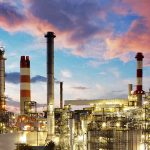Have you ever wondered how a nuclear powered ship works? How is this nuclear energy created? What happens internally? Read further as I attempt to explain the process of nuclear propulsion within a ship
Nuclear Powered Ships Explained
Nuclear powered ships are becoming increasingly popular in advancing ship technology. Previous drawbacks for using nuclear power centered mainly around the inherent safety concerns for the crew; installation, maintenance and disposal costs and the exceptionally high standards required for component manufacturing and quality assurance. These hurdles are slowly being overcome as more funds are being allocated to social security and defense worldwide and as a greater demand is being placed on sustained performance efficiency in naval ships.
Another important factor that has spurred on the continuous research of nuclear power generation within ships is the erratic cost of combustible fuels. A ship, being a fairly large means of transportation, requires adequate means of forward propulsion. In many ships throughout the world, combustible fuel is the primary means of thrust. Finding ways to combat the reliance on combustible fuel is where the importance of nuclear propulsion comes in. The adverse effects of burnt fuel being dispelled into the ocean are also a concerning factor for green and maritime-life rights activists.
Of course this does not mean to say that nuclear ships were not around in the earlier days. Shown below is the picture of a nuclear ship which was taken nearly four decades ago that shows a ship named “Otto Hahn,” which was a German nuclear powered ship.

How does a Nuclear Power Plant on Ship Work?
A large motivating factor in nuclear power generation is the concept of re-usable energy prompting an almost self-sustaining system.
The energy generating house or propulsion plant of a nuclear powered ship utilizes a nuclear reactor to generate heat. The heat is generated within the nuclear reactor as a result of the fissioning of the nuclear fuel. Lead shields are placed around the reactor as a preventive measure against the radiation produced from the fissioning process.
The nuclear propulsion plant operates as a pressurized water reactor design containing both a primary and secondary system.
Primary system: This is where water is circulated through the reactor, piping loops, pumps and steam generators. As the heat transferred from the reactor to the water is done at such a high pressure, it does not boil. Instead, the water is pumped from the steam generator back to the reactor for re-heating.
Secondary system: Steam which is produced at the steam generators supply the energy required to drive the turbine generators. The turbine generators then cause the propeller to rotate thereby causing thrust and a forward motion to the ship. Turbine generators are also utilized in supplying the ship with electricity. Once the steam has passed through the turbines, it is cooled and condensed into water and then fed back to the steam generators by the feed pumps.
As can be noted, both the primary and secondary systems involve the recirculation and renewal of water.
It should also be noted that these processes take place in a completely closed system. This ensures the safety of the onboard workers as well as any potential expulsion of radiated nuclear energy to nearby components and parts of the ship.
A Typical Nuclear Ship Arrangement
The above mentioned theory is generic in nature and good enough to give you a broad idea what a nuclear powered ship consists of. In this section we will take a look at a specific arrangement of a nuclear ship with the help of a diagram. As you can see in the picture below the diagram is fairly self explanatory and the nuclear components are shown on the left hand side of the diagram and the steam generation system which ultimately drives the propeller shaft on the right hand side.

The nuclear reactor produces heat which is used to generate steam and that steam in turn in used to provide motive power for turbines. Of course this arrangement might vary in different kinds of ships but is good enough to explain the overall idea.
Independence
The functionality of the propulsion plant does not require oxygen, thereby allowing the ship to operate independently from any external atmospheric requirements. Ship maneuvering and continuously changing operating performance requirements dictate highly irregular power demands. As can be imagined, the quality, strength, and reliability of component parts are of crucial importance to ensure sustained durability under such harsh conditions. One should bear in mind that the internals of a nuclear reactor remain inaccessible for inspection or replacement for an extensive period of time. One therefore understands the rigorous engineering safety checks and stress situations that need to take place before a nuclear power generation plant on a ship is approved for maritime use.


